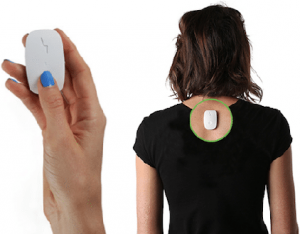By now you’ve likely heard the statement that sitting is the new smoking. As far as alarming yet memorable catch phrases go, it’s not a bad one. While residing in a near-permanent state of butt to chair connection may not be as dangerous as some of the occupational hazards of our past (hunting wild animals with crude weapons, casual interaction with dangerous chemicals), it is widely understood that our increasingly sedentary lifestyle poses a host of health risks. A rise in obesity is just one of the by-products of a new reality that has reduced the role of hands-on physical labor in many of our lives.
Take a Stand! What Have We Learned so Far from the Standing Desk Phenomenon?
One of the most popular trends to emerge in recent years has been the practice of working while standing up. Desks formulated to allow us to do all of our emailing, report-generating, number-crunching (and Instagramming) from a standing position have been increasing in popularity for years now. A growing number of employers are providing standing desks, or are at least willing to subsidize them. Advocates for standing desks will cite less back and neck pain, a reduction in obesity and a lower risk of heart disease as major reasons why you should jump to your feet immediately. In addition to these reported physical health-related benefits, people have experienced an improved mood and higher level of energy when they spend at least part of their day on their feet. This, in turn, has led to a reported increase in productivity, a win-win for all involved.
Ergonomic Realities: Know What You’re Standing For
While studies tend to validate the claims of the stand evangelists, we are advised to proceed with caution. Those hoping for massive calorie-burn will be disappointed to find that the improvements derived from standing are real, but modest. Many have noted, however, that standing while working often makes them more likely to walk around the office, or do other light tasks, which can improve results when done with regularity. Lightly moving in place or even fidgeting can be beneficial. And while the caloric benefits of standing aren’t substantial, studies have shown that it can significantly reduce the blood sugar spike commonly experienced after eating, which provides a myriad of health benefits.
One risk of suddenly standing all day is the potential to replace one form of pain with another. While chairs can cause discomfort for the neck and back, standing all day can result in foot and leg pain. In order to manage this, it’s advised that people ease their way into the transition. Even veteran standers tend to do-so for only a portion of their workday, so for beginners, it’s best to experiment and increase their standing incrementally, as opposed to being a cold turkey sitter-quitter. Comfortable shoes, and a yoga mat to stand on can be helpful.
Simple tasks like typing, or even thinking, might seem harder from a standing position, but over time many people find that this goes away. Like any change, the results will differ from person to person so persistence and experimentation are key.
The Cost of Standing
High end sit/stand desks feature multiple ergonomic pivot points, and can rise or lower to suit your needs at the push of a button. This, of course, comes at a cost, and one that not all employers are willing to cover. Fortunately, there are work-arounds. Something as simple as placing your laptop on a pile of books will suffice in many instances. Before converting a high-priced desk, it’s a good idea to find a way to try working while standing, to ensure that it’s for you.
Ergonomic Technology

When it comes to ergonomic solutions in the workplace, standing desks are just the tip of the iceberg. Chairs are improving all the time, with ever more adjustable components designed to improve your posture. Upright offers a small apparatus which can be affixed to the small of your back. When used in combination with an app, it will gently vibrate when you slouch in your chair, the electronic equivalent of a grade school teacher reminding you to sit up straight. Car manufacturers are constantly working to improve the ergonomics of seats and controls, including intuitive central control panels that will reduce the time you spend reaching and scrolling. Sensor equipped body suits, like the kind used to monitor the mechanics of high end athletes, are now being used to study the movements of assembly line workers in hopes of creating ever better ergonomics at their stations. As technology and the human body become ever more intertwined, the future of ergonomic technology is boundless.
Have you tried standing work stations? Let us know what you love and loathe on our LinkedIn page, this link will take you to the post about this article. Talk to you soon!

